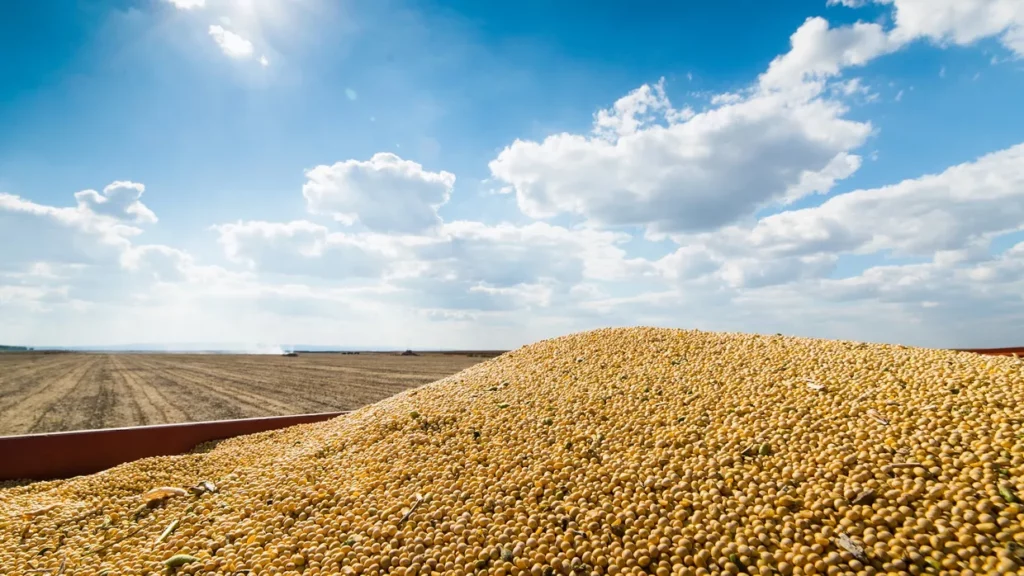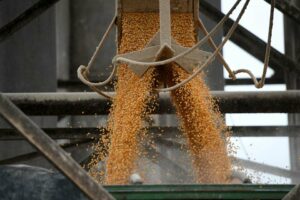Rational grain: how minimum export prices will affect the market

After the beginning of the full-scale Russian invasion, agricultural products became the main export flow of Ukraine. Because of the blocked ports, we had no opportunity to export metal products and ore, which are usually transported by sea. After the signing of the Grain Agreement, Ukraine got the opportunity to export only grain products by ship.
Fortunately, the grain agreement is already in the past, and the Ukrainian maritime corridor has taken its place. The export of metal products has been restored, but agricultural products still occupy the first place. The amounts of funds “circulating” in this area could not fail to interest both fraudsters and representatives of certain structures of the executive power.
As a result, the amount of unreturned foreign currency earnings from exports in Ukraine remains at the level of $7-8 billion, according to the National Bank of Ukraine. The good news is that this number has not been increasing for a year. Bad is still a very big loss for the budget.
The government began to look for a solution to prevent the “black” export of grain. One of the last such decisions was the implementation of the mechanism of minimum export prices, which was opposed by Ukrainian business. We will talk about this in the following material.
Minimum export prices: how the mechanism works on paper
On August 20, the Cabinet of Ministers adopted a resolution “On approval of the Procedure for approval of minimum permissible export prices for certain types of goods.” The document was prepared by the Ministry of Agrarian Policy.
According to the resolution, the Ministry of Agrarian Policy will determine the minimum allowable export prices for certain types of goods, taking into account the terms of delivery.
The minimum allowable prices will be determined in US dollars for 1 kilogram of the product. Prices for individual goods are calculated according to the terms of delivery, the export of which was the largest in the last five years.
Prices are calculated “on the basis of depersonalized information of the State Customs Service”, taking into account the conditions of deliveries for the previous month, as well as with the application of a 10% discount

• MЦ — the minimum allowable export price for a particular type of product, US dollars per 1 kilogram;
• РМЦ — reference minimum export price for a separate type of product for the previous month, US dollars/per 1 kilogram;
• Д is the discount percentage.
These are not the most difficult calculations given in the Procedure for the Approval of Minimum Permissible Export Prices. In particular, business sees corruption risks in these complex formulations and calculations made by fiscal officials. We will return to this topic in the next article.
Every month, the State Customs Service will submit to Minagro data on the export of certain types of goods for the previous month. Based on this information, the ministry will determine the allowable export prices for the next month.
The list of goods for which Minagro will set minimum export prices can be found at the link.
Arguments of the state
“We use the 5% percentile method. That is, we take 5% of all contracts that were concluded at the lowest prices and calculate the average price from them. And the obtained result is additionally discounted by 10%. Thus, this minimum calculated price will be lower than the weighted average price,” said Minagro representative Mykhailo Sokolov.
“This will create mechanisms to combat the shadow export of grain and oil crops. And it will establish clear rules for all market participants,” said Acting President. Minister of Agricultural Policy Taras Vysotskyi.
Vysotsky also promised that forward contracts will not be affected: if they were concluded during the period of establishment of the minimum allowable export prices, then the price valid at the time of signing the contract is taken into account.
Business about minimum export prices
Let’s start with the Ukrainian Grain Association (UGA). They believe that the implementation of the minimum price mechanism will lead to a significant drop in grain exports from Ukraine and will cause losses to agricultural producers.
UZA noted that the regulation of the price of exporters through the establishment of a minimum price contradicts the norms of the World Trade Organization (WTO), to which Ukraine is a member, in particular, the principles of free trade and non-discrimination.
In general, according to UGA, the establishment of minimum prices can:
• negatively affect the ability of exporters to fulfill their obligations;
• to undermine the trust of international partners in Ukrainian counterparties;
• reduce the competitiveness of Ukrainian goods on world markets;
• destroy the system of forward contracts that allow exporters to plan logistics operations in advance;
• lead to litigation and reduced investment in the agricultural sector.
If the minimum prices do not correspond to global price trends, this will destroy competition in the Ukrainian grain market and lead to its over-regulation and create new broad opportunities for corruption, according to UGA.
But the All-Ukrainian Agrarian Council supported changes in the legislation to combat the shadow circulation of grain. Laws No. 10168-2 and No. 10169-2, signed by President Volodymyr Zelenskyy, contain clauses on the introduction of minimum export prices, as well as on the administration of VAT and the return of foreign exchange. The Council did not specify whether they approve of the mechanism of minimum export prices, but in general they supported both laws.
The experts of the European Business Association (EBA) opposed the new control system for the return of foreign exchange earnings. They believe that the proposed approaches could lead to manual management of grain and oil exports – by blocking tax invoices and adjustment calculations.
Read about these innovations of the lawmakers and the risks that honest exporters may face, soon on USM.




